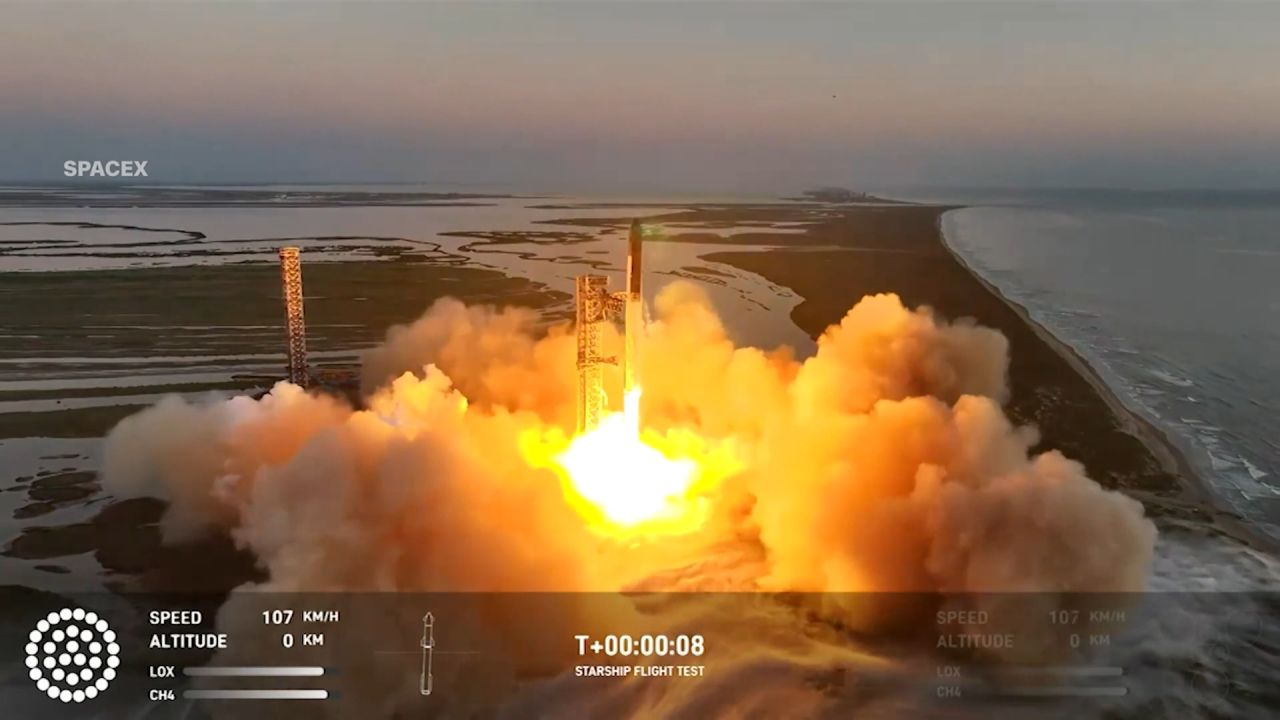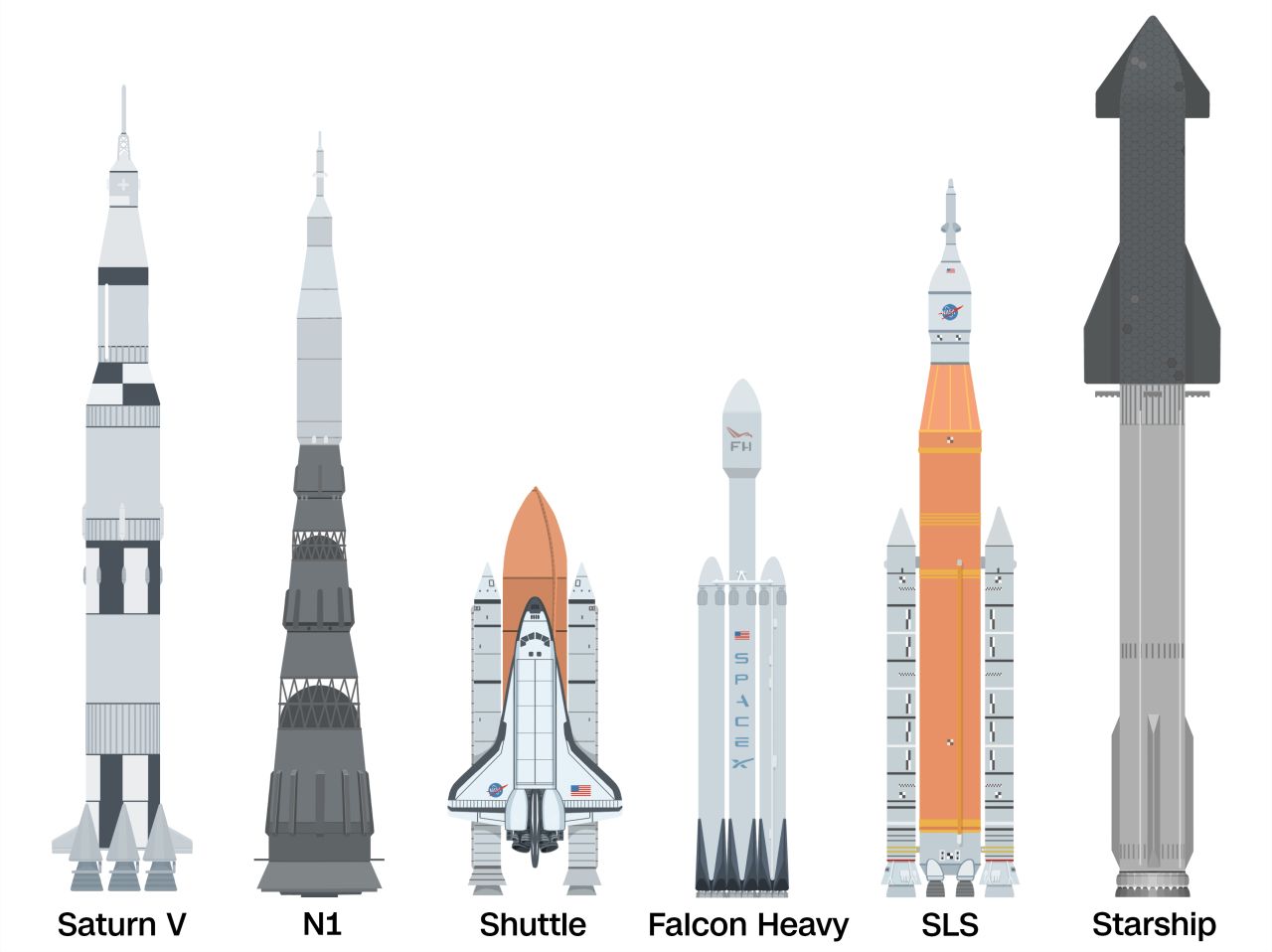What we covered here
• SpaceX launched Starship, the most powerful rocket ever built, on its fifth test flight.
• Liftoff of the Super Heavy rocket booster, topped with the uncrewed Starship spacecraft, occurred at around 8:25 a.m. ET from SpaceX’s Starbase facility in Boca Chica, Texas.
• For the first time, the company attempted and succeeded in bringing back and safely land the rocket’s booster, called Super Heavy, which is taller than a 20-story building.
• After launch, the booster traveled back toward the launch site where a set of massive metal arms, called “chopsticks,” caught the booster mid-air to save it from a hard landing.
• Starship is the vehicle selected to land US astronauts on the moon as soon as 2026.
• The big picture: With Starship and the Artemis program, NASA is racing against China to become the first to develop a permanent lunar outpost and set the precedent for deep-space settlements.




























